Time-of-Flight Secondary Ion Mass Spectrometry
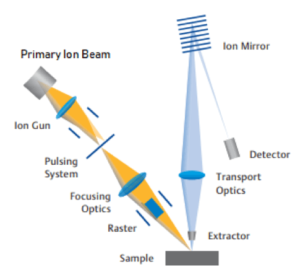 Time-of-Flight Secondary Ion Mass Spectrometry (TOF-SIMS) is a highly surface-sensitive analytical technique used to obtain elemental, isotopic and molecular information from the surface of solid materials. The surface of interest is bombarded with a pulsed ion beam that is rastered across the sample, causing a cascading collision effect that ejects material such as ions (positive, negative neutral), photons and electrons. For TOF-SIMS, we are only interested in collecting and measuring the positively and negatively charged ions that are ejected from the surface. These are considered “secondary” ions. The secondary ions are extracted from the surface and accelerated toward a highly sophisticated and specialized detector (mass spectrometer). The time it takes for those ions from when they leave the surface until they hit the detector tells us their mass (time-of-flight).
Time-of-Flight Secondary Ion Mass Spectrometry (TOF-SIMS) is a highly surface-sensitive analytical technique used to obtain elemental, isotopic and molecular information from the surface of solid materials. The surface of interest is bombarded with a pulsed ion beam that is rastered across the sample, causing a cascading collision effect that ejects material such as ions (positive, negative neutral), photons and electrons. For TOF-SIMS, we are only interested in collecting and measuring the positively and negatively charged ions that are ejected from the surface. These are considered “secondary” ions. The secondary ions are extracted from the surface and accelerated toward a highly sophisticated and specialized detector (mass spectrometer). The time it takes for those ions from when they leave the surface until they hit the detector tells us their mass (time-of-flight).
Each point of impact on the sample from the primary ion beam contains the entire mass spectrum as well as the X, Y and Z coordinates of that point of impact. With this information, we can create detailed ion images of the distribution of any species of interest on our sample, both in 2D and in 3D (in depth profile mode).
Features
-
Argon gas cluster source – provides the ability to detect high mass polymers and depth profile through complex organic materials
-
In situ focused ion beam – can analyze extremely rough samples, samples with voids, or samples that exhibit strong local variations in density
-
Extended dynamic range analyzer – extends dynamic range up to 7 orders of magnitude, allowing for simultaneous detection of normally saturated matrix species and trace species
-
Hermetically sealed transfer vessel – provides the ability to analyze atmospheric- or moisture-sensitive samples
Mass Spectra
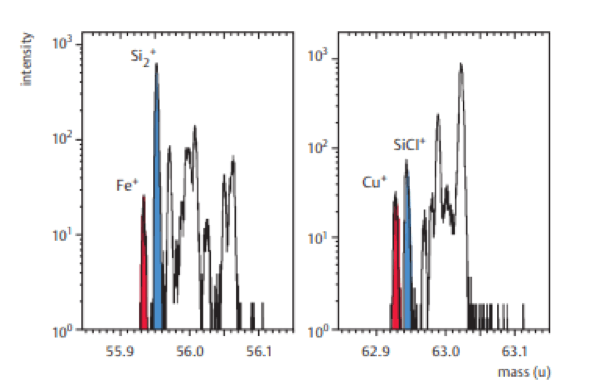
2D Ion Images
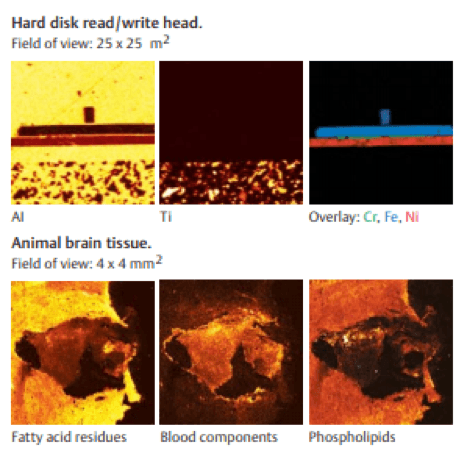

3D Ion Images
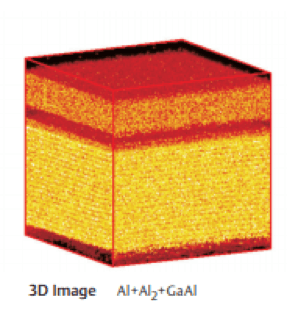
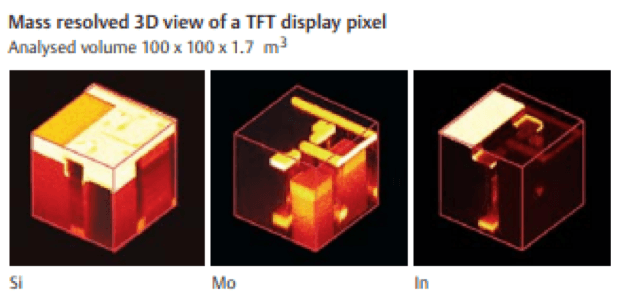
FIB Tomography Ion Images
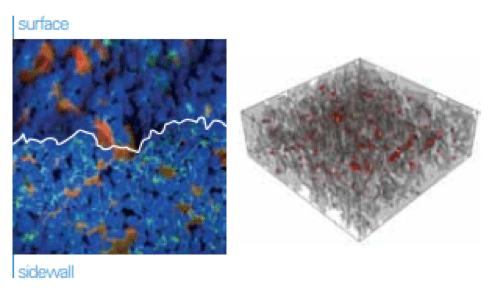

For more information about the TOF-SIMS, please contact Michael Walker at mawalker@mines.edu.